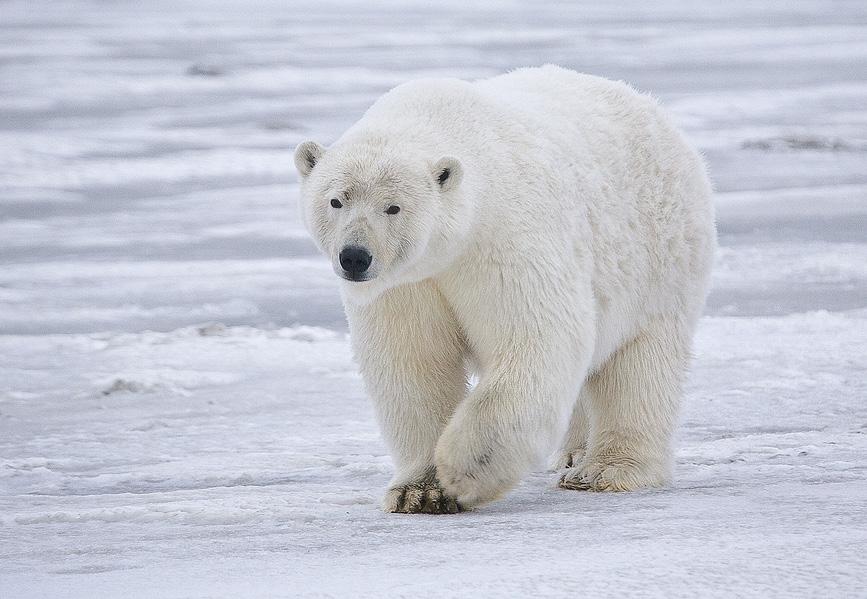
3 minute read
EXAMINING THE WILLOW PROJECT
BY DANA YANG
Looking into what the Willow Project means for us and our environment
Advertisement
On March 13, the Biden administration approved the Willow Project, a massive oil drilling venture in Alaska. The $8 billion project allows the company ConocoPhillips to drill for oil in the National Petroleum Reserve-Alaska, which is the largest undisturbed public land in the nation. According to ConocoPhillips, the project would produce 180,000 barrels of oil per day at its peak.
Although the project’s scope has been narrowed from five oil-drilling sites to three, the Willow Project still has severe environmental implications. If carried through, the project would release up to 287 million metric tons of carbon dioxide into the atmosphere over its 30-year lifetime. For reference, this is equivalent to the carbon dioxide emissions from 36 million homes’ energy use for a year, 32 billion gallons of gasoline consumed or more than 70 coal fired power plants operating a year — not a small amount by any means. APES teacher Lora Lerner agrees that the project would inevitably worsen climate change.
“[The project] spews out some greenhouse gases directly, but then it is also contributing additional oil supply, which of course is going to get used in greenhouse gases,” Lerner said. “So you’d have this short term and then the longer term contribution to climate change.”
The Arctic, once the world’s “carbon sink,” is now warming nearly four times faster than the rest of the world. The Arctic is one of Earth’s cooling mechanisms due to its “albedo effect”: a white, reflective layer of sea ice on the
Arctic Ocean reducing the absorption of incoming solar radiation. However, as global warming accelerates, the sea ice melts, causing solar radiation to be absorbed by the darker surface underneath the ice. A positive feedback loop thus occurs, where global warming melts the sea ice, and the absorption of solar radiation further contributes to global warming, causing even more ice loss.
Animal Protection Society officer
Anchita Dash emphasizes that the loss of sea ice has a large impact on the animals in Alaska.
“There are a lot of animals in Alaska that depend on sea ice, especially polar bears,” Dash said. “And they are already endangered in Alaska. And I think by doing [the Willow Project], you’re putting them at risk even more.”
The melting of sea ice also produces algae blooms, which are overgrowths of algae in water. Algae blooms deplete dissolved oxygen in the water through their respiratory processes, effectively causing fish to suffocate or face other forms of damage.
“The fish population would, of course, dwindle,” Dash said. “Polar bears, which are on top of the food chain and feed on these fishes, eventually will also die because they have nothing else to eat.”
Apart from harming animals, the melting ice is also uncovering permafrost, which is ground made of soil, rocks, and ice that has been frozen year-round. As the permafrost rapidly melts, trapped carbon and water from dead organisms is released into the atmosphere. The Arctic’s permafrost contains an estimated 50% of the world’s carbon. Besides increasing global warming, permafrost thaw also destabilizes infrastructure, harms ecosystems and impacts accessibility to food.
The oil drilling and alteration of the land surface caused by the Willow Project would only exacerbate the Arctic’s fragile environment.
The village of Nuisqut, which is already impacted by oil activity, is located about 30 miles away from the project. The construction of the wells, roads, and hundreds of miles of pipelines necessary for the Willow Project would cause insurmountable damage to the vibrant environ- ment and wildlife, tainting the homes of thousands of bird species and already-threatened animals. oil and gas projects sanctioned from 2022 to 2025 could produce 70 gigatons of carbon dioxide emissions, which is more than 30 times the United States’ total carbon dioxide emissions in 2021.
Residents of Nuisqut voice their disapproval, as many rely on subsistence hunting of migratory herds of caribou for their primary diet and are already negatively impacted by oil activity.
“We have experienced rising health issues, and the dismantling of traditional practices and food sources because of oil extraction and industrialization on the Arctic Slope,” executive director of the organization Sovereign Iñupiat for a Living Arctic Siqiñiq Maupin said in a statement to Trustees for Alaska.
Proponents of the Willow Project state that the project would decrease reliance on foreign oil and would generate large sums of revenue for federal, state, and local governments, ultimately benefiting the economy.
Siqi Iq Maupin
However, we should be less concerned over quickearned money and focus on the multitude of ways climate change will irreversibly affect, and has already affected, our own lives and the lives of other species on the planet.
In terms of its contribution to climate change, the Willow Project isn’t the only one of its kind — each new extraction project stretches the environment an inch closer to its limits.
“The Willow Project is kind of a drop in the bucket of a much, much larger problem,” Lerner said. “If we didn’t do this project, does that take away the problem? No.”
As the demand for fossil fuels persists, oil and gas companies have become more and more unwilling to turn away from the monopoly they have over the economy.
According to an analysis by the advocacy group Oil Change International,
Instead of relying on fossil fuels that are wrecking the climate and slowly bringing the Earth to its breaking point, we need to invest in clean, renewable energy sources that would drastically reduce carbon emissions. Only then can we look comfortably towards the future and rest assured that following generations are left with a liveable planet.









